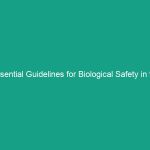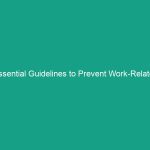Introduction
Good morning team! Today, we are going to talk about an essential aspect of our Workplace Safety: the three-way communication guidelines. Effective communication is crucial in ensuring that everyone understands Safety protocols, recognizes risks, and can respond appropriately in emergencies. By enhancing our communication practices, we not only protect ourselves but also foster a safer workplace Environment for everyone.
Understanding Essential Three Way Communication
The term three-way communication refers to a communication model that involves three parties: the sender, the receiver, and a third party (which could be a supervisor or Safety officer) who facilitates the communication process. This model is vital in Workplace Safety as it ensures that messages are accurately conveyed, understood, and acted upon.
Effective three-way communication plays a significant role in our daily operations. It helps prevent misunderstandings, ensures that Safety Measures are clearly articulated, and enhances overall team collaboration. One common misconception is that simply relaying information is enough. However, true communication involves feedback, clarification, and confirmation, which are critical for safety protocols.
Key Hazards, Risks, and Safety Considerations
When we think about Workplace Safety, several Hazards and risks can arise from poor communication. For instance, if safety instructions are not clearly communicated, employees may misinterpret critical information, leading to accidents or injuries. Additionally, without proper feedback mechanisms, employees might not feel empowered to voice their concerns or share observations about unsafe practices.
Real-world consequences of ignoring effective communication can be severe. For example, there have been incidents where a lack of clear communication regarding machinery Operation led to serious injuries. In another case, emergency protocols were not followed correctly due to misunderstandings, resulting in delayed responses during a critical situation.
Best Practices, Procedures, & Actionable Advice
Step-by-Step Safety Procedures
To implement effective three-way communication, consider the following Best Practices:
- Establish Clear Protocols: Ensure that all safety procedures are documented and easily accessible. This includes clear instructions for operating equipment, emergency procedures, and reporting hazards.
- Encourage Feedback: Create an environment where employees feel comfortable providing feedback. Use tools such as suggestion boxes or regular safety meetings to facilitate open communication.
- Utilize Visual Aids: Incorporate visual aids like charts, diagrams, and signage to complement verbal communication. This can help reinforce critical safety messages.
- Conduct Regular Training: Offer ongoing training sessions that include role-playing scenarios to practice three-way communication in safety contexts.
Practical Tips and Real-Life Examples
Here are some practical tips to enhance three-way communication:
- Use the “Teach-Back” Method: After receiving safety instructions, ask employees to repeat or demonstrate what they have learned. This not only confirms understanding but also highlights any areas of confusion.
- Check-In Regularly: Schedule brief check-ins with team members to discuss any safety concerns or questions they might have. This can help identify issues before they escalate.
- Share Success Stories: Highlight instances where effective communication led to successful safety outcomes. This reinforces the importance of these guidelines and encourages employees to follow suit.
Regulations, Standards, and Compliance
Adhering to Regulations and Standards is vital for maintaining a safe workplace. Organizations such as OSHA (Occupational Safety and Health Administration) and ISO (International Organization for Standardization) provide guidelines that emphasize the importance of clear communication in safety practices.
Compliance with these regulations not only protects employees but also mitigates legal risks for the organization. Understanding these standards helps employees appreciate the significance of following safety protocols and communicating effectively.
Employee Engagement & Discussion
Now, let’s engage in a discussion. Here are a few questions to consider:
- What safety challenges have you encountered related to communication on the job?
- How do you think we can improve our three-way communication practices?
- Can you share an experience where effective communication made a difference in a safety situation?
Feel free to share your thoughts and experiences. Your input is valuable in creating a safer workplace for all of us!
Conclusion & Key Takeaways
In conclusion, implementing essential three-way communication guidelines is fundamental in enhancing Workplace Safety. By establishing clear protocols, encouraging feedback, and utilizing effective communication strategies, we can significantly reduce risks and create a safer environment.
Remember, safety is a shared responsibility, and your active participation is key. Thank you all for your attention and for your commitment to prioritizing safety in our workplace. Let’s continue to work together to maintain a safe and healthy environment for everyone!


